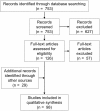Biological Predictors of Clozapine Response: A Systematic Review
- PMID: 30093869
- PMCID: PMC6070624
- DOI: 10.3389/fpsyt.2018.00327
Biological Predictors of Clozapine Response: A Systematic Review
Abstract
Background: Clozapine is the recommended antipsychotic for treatment-resistant schizophrenia (TRS) but there is significant variability between patients in the degree to which clozapine will improve symptoms. The biological basis of this variability is unknown. Although clozapine has efficacy in TRS, it can elicit adverse effects and initiation is often delayed. Identification of predictive biomarkers of clozapine response may aid initiation of clozapine treatment, as well as understanding of its mechanism of action. In this article we systematically review prospective or genetic studies of biological predictors of response to clozapine. Methods: We searched the PubMed database until 20th January 2018 for studies investigating "clozapine" AND ("response" OR "outcome") AND "schizophrenia." Inclusion required that studies examined a biological variable in relation to symptomatic response to clozapine. For all studies except genetic-studies, inclusion required that biological variables were measured before clozapine initiation. Results: Ninety-eight studies met the eligibility criteria and were included in the review, including neuroimaging, blood-based, cerebrospinal fluid (CSF)-based, and genetic predictors. The majority (70) are genetic studies, collectively investigating 379 different gene variants, however only three genetic variants (DRD3 Ser9Gly, HTR2A His452Tyr, and C825T GNB3) have independently replicated significant findings. Of the non-genetic variables, the most consistent predictors of a good response to clozapine are higher prefrontal cortical structural integrity and activity, and a lower ratio of the dopamine and serotonin metabolites, homovanillic acid (HVA): 5-hydroxyindoleacetic acid (5-HIAA) in CSF. Conclusions: Recommendations include that future studies should ensure adequate clozapine trial length and clozapine plasma concentrations, and may include multivariate models to increase predictive accuracy.
Keywords: clozapine; response biomarker; schizophrenia; treatment response; treatment-resistance.
References
Grants and funding
LinkOut - more resources
Full Text Sources
Other Literature Sources
Miscellaneous


